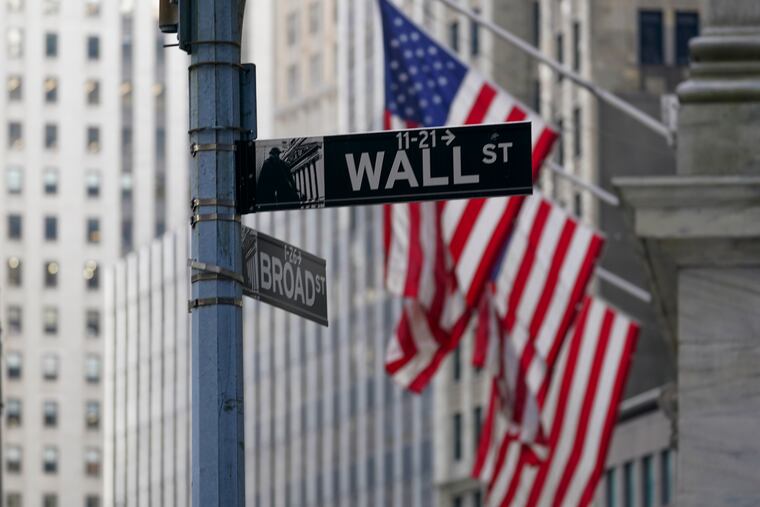Fed hikes rates by half a percentage point in fight against inflation
Faced with soaring prices and a hot job market with record numbers of job openings, the Fed is betting that a steady series of hikes will slash inflation and cool the economy.

WASHINGTON — The Federal Reserve raised interest rates Wednesday by half a percentage point and scaled back other pandemic-era economic supports, strengthening its efforts to fight the highest inflation in 40 years, and vowing to keep up the pressure as Americans continue to struggle.
“Inflation is much too high,” Fed Chair Jerome H. Powell said at a Wednesday afternoon news conference. “We understand the hardship it is causing and we are moving expeditiously to bring it back down. We have both the tools we need and the resolve that it will take to restore price stability on behalf of American families and businesses.”
The rate increase, to a range of 0.75% to 1%, is the sharpest since 2000 and the second of seven hikes forecast for this year. Powell added during a news conference that additional interest rate hikes as high as 0.5 percentage points are “on the table” in the coming months but he also said the Fed board has not seriously discussed even higher interest rate hikes. Major financial markets edged higher during his remarks.
Faced with soaring prices and a hot job market with record numbers of job openings, the Fed is betting that a steady series of hikes will slash inflation, cool the economy and get the coronavirus recovery on more sustainable footing, at a time when much uncertainty looms in the global economy. Russia’s invasion of Ukraine has driven up energy prices, and COVID-19 shutdowns in China have triggered a new wave of supply chain snarls, both threatening to make the Fed’s job much harder.
The Fed also announced it will start scaling back its nearly $9 trillion balance sheet in June, moving at a quicker pace than the last time the Fed shrank its portfolio, several years following the Great Recession.
Powell said he understood that the stakes are high for Americans, many of whom have never weathered inflation.
“It’s our job to make sure that inflation of that unpleasant high nature doesn’t get entrenched in the economy,” Powell said. “The process of getting there involves higher rates — higher mortgage rates and higher borrowing rates, things like that. It’s not going to be pleasant, either, but in the end everyone is better off. Everyone. Particularly people on fixed incomes and at the lower part of the income distribution are better off with stable prices.”
Indeed, the interest rate hike will make an array of loans costlier for households and businesses, especially mortgage rates, which have already been inching up. Higher lending costs tend to cool the economy by weighing on business and consumer spending, and eventually lead to lower prices overall, especially for necessities such as housing, gas and groceries.
Much is at stake if the Fed’s plans go awry or if inflation becomes even more entrenched. The Fed must continue to pull back on its historic support for the economy — which began during the height of the pandemic shutdowns, when 20 million people lost jobs — by raising rates and winding down its vast balance sheet.
But policymakers must move slowly and not too forcefully, or rates could rise too quickly, prompt businesses to lay people off or send the country into a recession.
In March, the Fed raised rates for the first time since slashing them to zero in the spring of 2020, opting for a more modest rate hike of a quarter percentage point. That month, inflation rose 8.5% compared with the year before.
Many Fed leaders have said they want to front-load more-aggressive hikes now and in the coming months, to make progress curbing inflation before it is too late. Markets and Fed watchers say it is likely that the Fed will opt for another half-percentage-point increase at the next policy meeting in June, and possibly again later this summer.
Inflation has been a scourge on an economy that appears strong by several other measures. The U.S. economy has added 1.7 million jobs this year. Consumer spending is strong, and wages are rising. The Biden administration often touts this progress as hard to fathom when the pandemic began.
However, higher costs for rent, clothing and utilities increasingly dominate how people are feeling about the economy, and have made it harder for the Biden administration to rally support for its economic message. And though inflation is the purview of the Fed, it has weighed heavily on President Joe Biden’s approval ratings, even while the administration touts its own steps to lower gas prices and ease other inflationary pressures.
Republicans are hammering Democrats on the economy going into the 2022 midterms, arguing that sweeping stimulus spending from last year sent the economy into overdrive. Republicans also say the Fed waited too long to respond to inflation and hike rates.